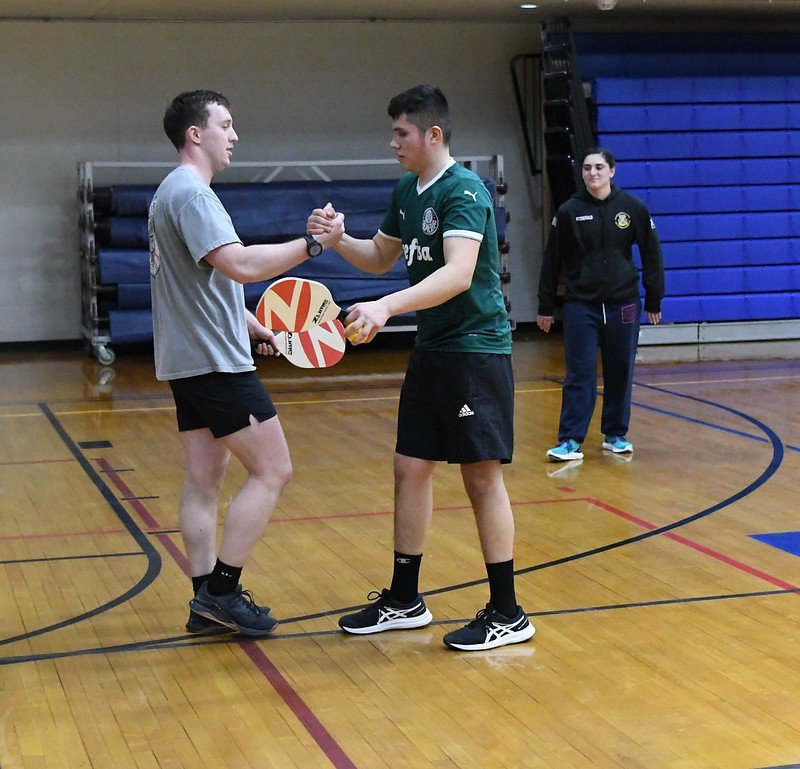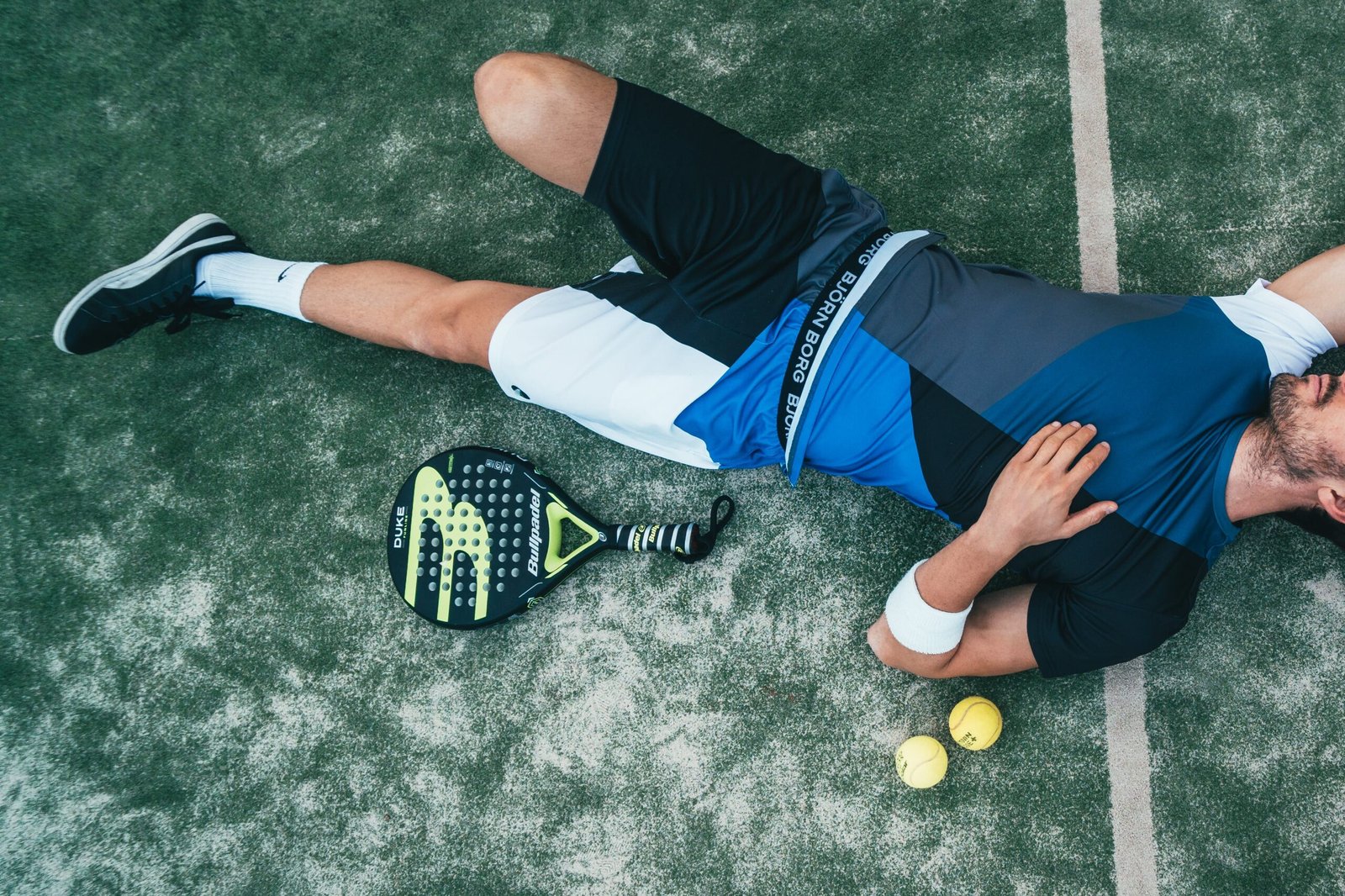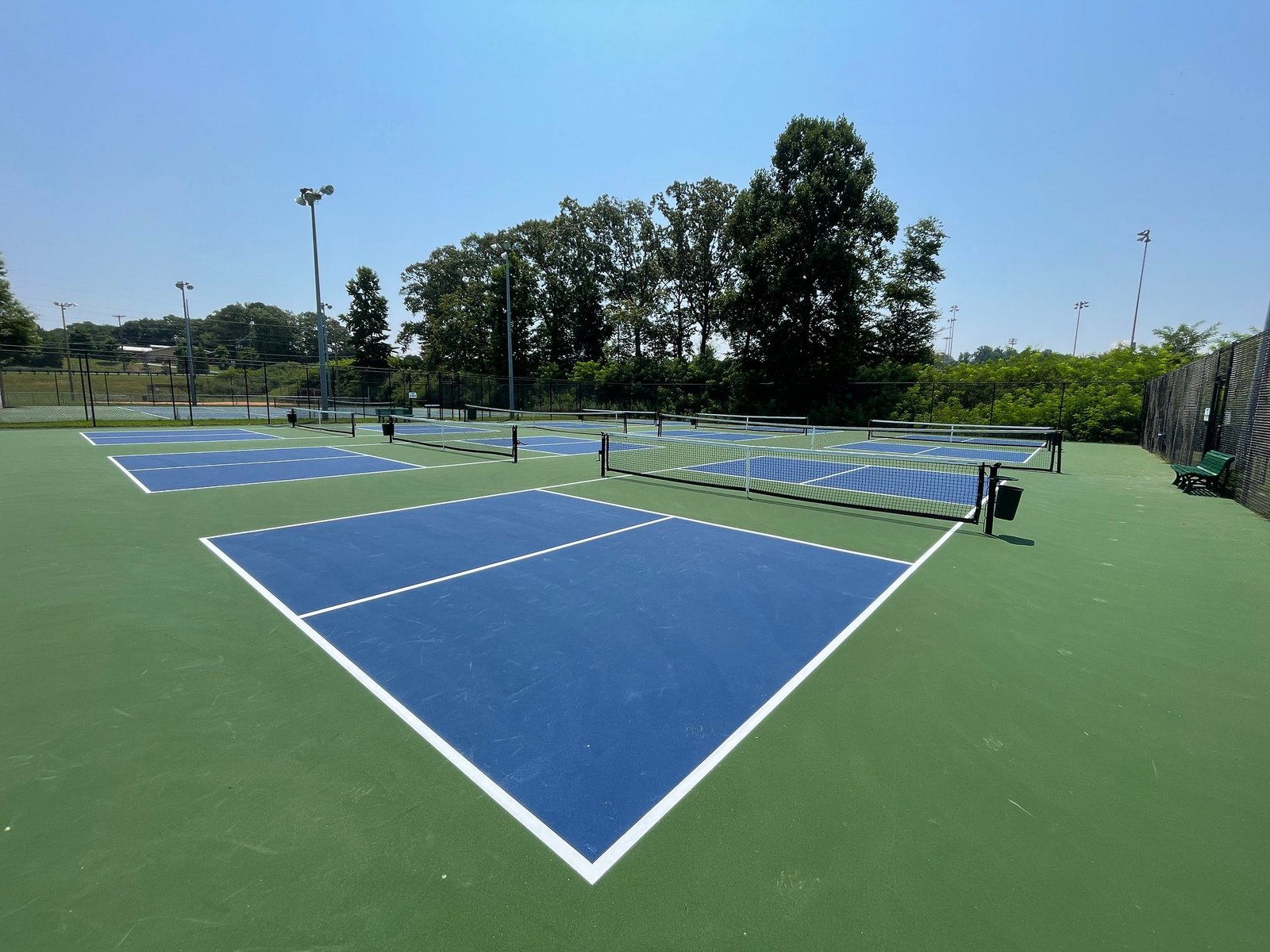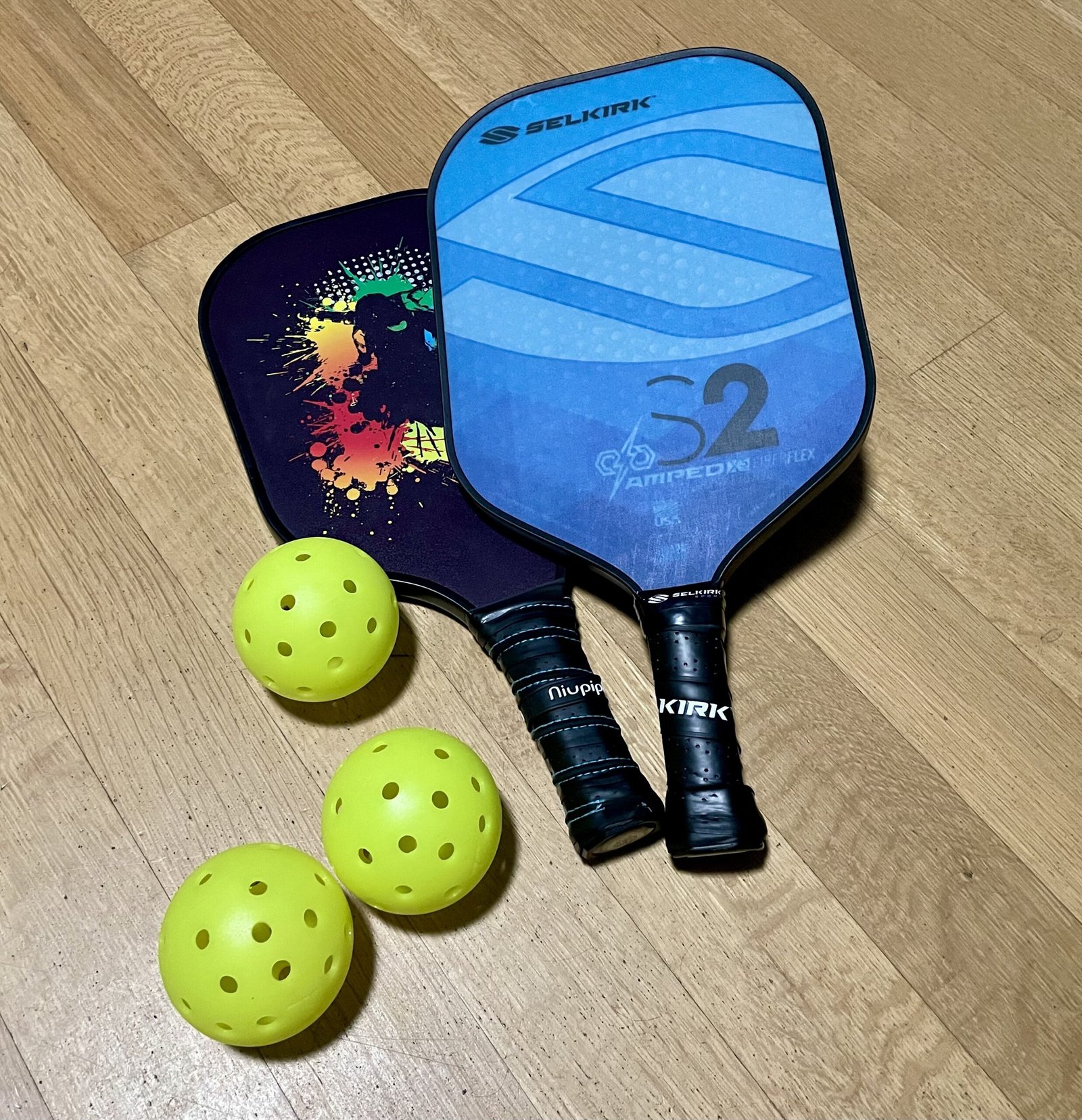This rapidly rising sport has captivated novices and seasoned players alike. Its unique amalgamation of tennis, badminton, and table tennis elements crafts an engaging game that’s accessible to all skill levels and ages. This guide serves as your introduction to the essentials of Pickleball, catering to beginners and those seeking a refresher on the fundamentals.
Pickleball’s gear requirements are minimal, with a paddle and a perforated plastic ball forming the core essentials. Paddles come in various materials, weights, and grips, allowing for individual customization. Additionally, comfortable athletic wear and court-appropriate shoes are recommended for optimal performance during play. Understanding the Pickleball rules is key to enjoying it thoroughly.
Played on a smaller court than tennis, the game involves serving diagonally, limiting bounces before volleys, and a simple scoring system. Games typically reach 11 points, with a requirement to win by at least two points.
The allure of Pickleball for beginners lies in its perfect balance of enjoyment and fitness. Its easy accessibility and social nature foster a sense of camaraderie among players. Moreover, its lower-impact nature compared to other racket sports makes it an enticing option for those seeking an engaging yet gentle physical activity.
Whether you’re a complete novice or a curious spectator, this guide aims to demystify Pickleball, providing you with the necessary knowledge to step onto the court with confidence and enthusiasm.
Table of Contents
Why is everyone so obsessed with pickleball?
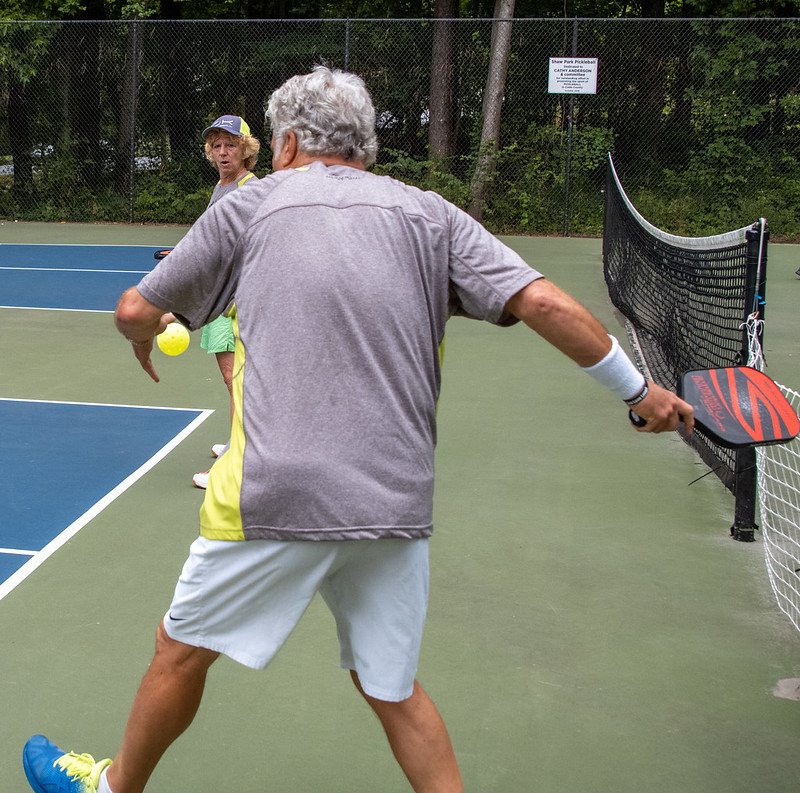
Pickleball’s meteoric rise in popularity stems from a perfect storm of factors that cater to diverse demographics and preferences. Firstly, its inherent accessibility is a magnet for enthusiasts. The game’s simplistic rules, smaller court size, and slower ball speeds make it easy for beginners to grasp, encouraging rapid skill acquisition.
Moreover, its appeal spans generations, attracting both the young and the elderly due to its low-impact nature, which minimizes the risk of injury compared to more physically demanding sports.
The social aspect further fuels the obsession. Pickleball offers a communal experience, fostering friendships and camaraderie among players. Whether in singles or doubles matches, it cultivates a supportive environment that transcends mere competition.
The game’s addictive nature also contributes to its widespread adoration. Its blend of strategy, finesse, and fast-paced action creates an addictive gameplay loop, drawing players back for more. Additionally, the versatility of the sport, playable indoors or outdoors, ensures its year-round availability across various climates.
The combination of its simplicity, inclusive nature, social connectivity, and engaging gameplay has ignited a global fascination with pickleball, leading to an obsession that shows no signs of waning anytime soon.

What is pickleball, and where did it come from?
Pickleball is a paddle sport that combines elements of tennis, badminton, and table tennis. It is played on a smaller court with a solid paddle and a perforated plastic ball, resembling a larger version of a ping pong ball. The game involves players volleying the ball over a net, aiming to score points by making the ball land within the opponent’s court.
The origins of pickleball trace back to 1965 when it was invented on Bainbridge Island, near Seattle, Washington, by Joel Pritchard, a congressman and businessman, along with his friend Bill Bell and Joel’s family friend, Barney McCallum. The game was initially conceived as a form of entertainment for their families. Legend has it that the name “pickleball” originated from the Pritchard family’s dog, Pickles, who would chase after the ball during their matches.
The sport’s popularity gradually expanded beyond the confines of the island, spreading across the United States and then internationally. It gained traction due to its simplicity, accessibility for people of varying ages and skill levels, and the engaging, social nature of the game. Pickleball has evolved into a widespread sport, with dedicated enthusiasts, organized leagues, tournaments, and an ever-growing community of players globally.
Why is pickleball so popular?
Pickleball has gained popularity for several reasons:
Accessibility
Pickleball’s appeal lies in its remarkable accessibility, attracting individuals of diverse ages and skill levels. Unlike some sports that require extensive training or physical prowess, pickleball’s simplicity makes it welcoming to beginners. The court, measuring just 20 feet wide and 44 feet long for doubles (about a quarter of the size of a tennis court), presents a manageable space for newcomers to navigate. This smaller court size reduces the amount of ground to cover, making movement less daunting for beginners and allowing for quicker mastery of court positioning and strategies.
The rules of pickleball are relatively straightforward, facilitating an easier learning curve. Serving diagonally, allowing only one bounce before volleys, and employing an easy-to-understand scoring system (where points are won on every serve) contribute to the game’s simplicity. Such uncomplicated rules reduce the intimidation factor often associated with learning a new sport, enabling novices to grasp the basics and participate actively quickly.
Moreover, the sport’s adaptability adds to its appeal. While it does demand physical activity, it is notably less taxing on the body compared to some other racket sports, making it suitable for a wide range of ages and fitness levels. Its blend of cardio, agility, and hand-eye coordination appeals to both the young and the elderly seeking to maintain an active lifestyle without excessive strain.
Overall, pickleball’s accessibility is underpinned by its straightforward rules, smaller court size, and adaptability, making it an inviting sport for beginners and a continually growing passion for players of all backgrounds and abilities.
Social Aspect
Pickleball, unlike many sports, offers the versatility of gameplay in both singles and doubles formats, making it a unique and highly social activity. The option to play singles allows for a more focused and individualized experience, emphasizing personal skill and strategy on the court. On the other hand, engaging in doubles play brings an added layer of camaraderie and teamwork, fostering a lively and social environment that contributes significantly to its appeal.
The social aspect of pickleball is one of its most cherished attributes. When playing doubles, teammates must coordinate movements, communicate effectively, and anticipate each other’s actions, creating a bond that extends beyond the court. It’s not just about hitting the ball; it’s about the shared experience, the encouragement, and the mutual support that players provide one another.
The game’s inherently friendly and inclusive nature promotes interaction among participants. Pickleball courts often become hubs for social gatherings, where players of different ages, backgrounds, and skill levels converge. Whether you’re a beginner or a seasoned player, the community ethos of pickleball encourages everyone to participate, learn, and have fun together.
The communal atmosphere contributes significantly to its popularity as a recreational activity. It provides an avenue for individuals to forge new friendships, build connections, and strengthen existing relationships within a supportive and welcoming community. Moreover, the social bonds formed through pickleball often extend beyond the court, creating lasting friendships and a sense of belonging among players, making it more than just a sport—it’s a platform for social engagement, wellness, and community building.
Physical Activity
Pickleball offers a fantastic workout while being comparatively less physically demanding than many other sports. Its allure lies in providing a comprehensive physical activity without placing excessive strain on the body, making it particularly appealing to a wide range of individuals seeking a balanced exercise routine.
The sport’s lower-impact nature stems from various factors intrinsic to its design and gameplay. Unlike high-impact sports that involve intense running or jumping, pickleball involves movements that are less strenuous on the joints. The court’s smaller size and slower ball speed compared to tennis reduce the need for extensive running, mitigating the impact on the knees, hips, and ankles.
Moreover, pickleball’s adaptable pace caters to different fitness levels. Players can control the intensity of the game, allowing for a gradual build-up or a more vigorous workout based on individual preferences and fitness levels. The sport encourages quick lateral movements, engaging core muscles, improving agility, and enhancing hand-eye coordination without excessively taxing the body.
Additionally, its social and recreational aspects contribute to its appeal as a fitness activity. Players often find themselves engrossed in the game’s fun and competitive elements, sometimes unaware of the physical exertion they’re experiencing. This makes pickleball an enjoyable way to burn calories, improve cardiovascular health, and increase overall fitness levels without feeling like an intense workout.
The combination of its moderate intensity, adaptability, and engaging gameplay positions pickleball as an ideal choice for individuals seeking a well-rounded physical activity that prioritizes fun, social interaction, and fitness without overburdening the body with excessive impact or strain.
Adaptability
Pickleball’s adaptability to various environments makes it an attractive sport, suitable for year-round play in diverse climates. Whether indoors or outdoors, on different surfaces, the game’s versatility contributes to its widespread popularity.
Indoor pickleball courts are often found in recreational centers, gymnasiums, or dedicated facilities. These courts offer controlled environments unaffected by weather conditions, allowing for consistent play throughout the year. The standard indoor court size is 20 feet wide by 44 feet long, with a smooth surface conducive to the game’s quick movements and ball bounces.
Conversely, outdoor pickleball courts are prevalent in parks, community centers, and recreational areas. These courts can be made of various materials such as asphalt, concrete, or acrylic, providing a durable surface that withstands outdoor elements. Outdoor courts often feature vibrant lines and nets, making them easily accessible to the public. The outdoor court dimensions remain the same as the indoor ones.
The adaptability of pickleball to different surfaces contributes to the accessibility of the sport. While certain surfaces may slightly alter the game’s pace and ball bounce, players can adjust their strategies accordingly, enhancing the overall experience. Additionally, the availability of both indoor and outdoor courts offers players flexibility in choosing their preferred playing environment based on weather conditions or personal preferences.
The sport’s capacity to be played in various settings, whether indoors or outdoors, underscores its inclusivity and appeal to players of all ages and skill levels. This adaptability has contributed significantly to pickleball’s growing popularity, making it a versatile and enjoyable option for enthusiasts around the world.
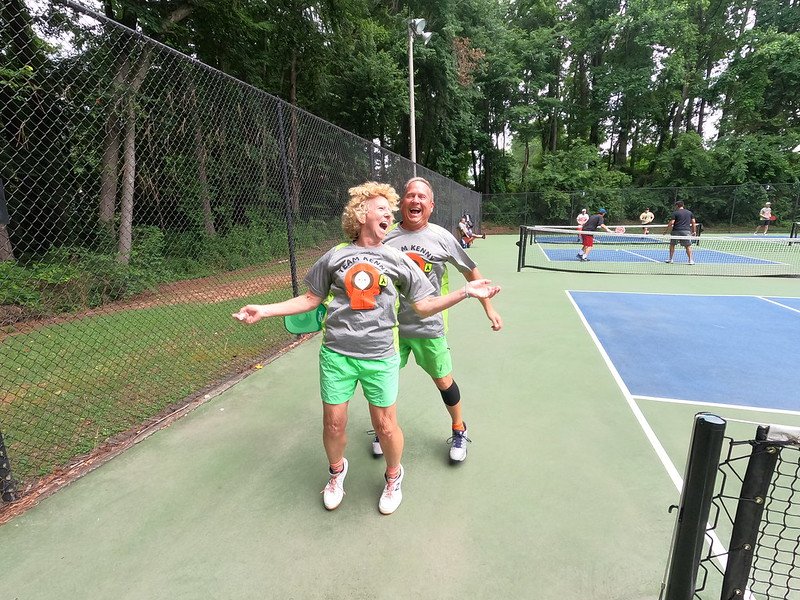
Fun and Addictive
Pickleball’s magnetism lies in its fusion of familiar elements from tennis, badminton, and table tennis, culminating in a distinctive and captivating game. This amalgamation not only makes it accessible to a wide range of individuals but also contributes significantly to its widespread appeal.
From tennis, pickleball adopts the strategy of placing shots strategically, the notion of serving diagonally, and the scoring system. It inherits the quick reflexes, agility, and hand-eye coordination aspects from table tennis, requiring swift reactions to volley the ball efficiently. Additionally, the utilization of a solid paddle in pickleball, resembling a giant ping pong paddle, evokes a sense of familiarity for table tennis enthusiasts.
The influence of badminton in pickleball is evident in the volley-style play, the requirement for quick movements across the court, and the emphasis on both offensive and defensive techniques. The perforated plastic ball used in pickleball, akin to a larger version of a badminton shuttlecock, adds an element of control and precision, demanding players to maneuver it skillfully.
The synthesis of these elements creates a dynamic and engaging experience for players. The game’s adaptability for various skill levels allows both beginners and experienced athletes to enjoy competitive matches. Its shorter court dimensions and the less intense physical demands compared to some other sports make it appealing to a broader demographic, fostering inclusivity and encouraging participation among diverse age groups and fitness levels.
Ultimately, it’s this blend of familiarity, strategy, and accessible gameplay that contributes to pickleball’s charm, enticing players to engage in the sport repeatedly and fostering a growing community of passionate enthusiasts worldwide.
Growing Popularity of Pickleball
The surge in pickleball’s popularity has been fueled by a combination of factors that have resonated with a diverse array of enthusiasts. Its accessible nature and the ease with which beginners can grasp the basics have contributed significantly to its widespread adoption. Different from some other racket sports, pickleball’s court is smaller, making it less intimidating for newcomers. Additionally, the rules are relatively straightforward, allowing beginners to understand gameplay mechanics and participate in matches confidently and quickly.
Moreover, pickleball’s appeal extends beyond age barriers, catering to both the younger and older demographics. The game’s social element has been a driving force in attracting players from various age groups. The opportunity to engage in friendly competition or collaborate in doubles matches fosters a sense of community and camaraderie among players.
The increasing availability of facilities dedicated to pickleball has played a pivotal role in its growth. Many recreation centers, community clubs, and sports facilities have recognized the rising demand and have responded by installing pickleball courts. This expansion has not only provided more opportunities for people to play but has also facilitated the organization of tournaments and leagues. These events offer players a chance to showcase their skills, compete at various levels, and connect with a broader community of pickleball enthusiasts.
Furthermore, the sport’s inclusivity has been pivotal in attracting a diverse following. Seasoned athletes looking for a new challenge, retirees seeking a social and active pastime, and families searching for a fun activity they can enjoy together have all found a place within the pickleball community. As word continues to spread about the game’s benefits and enjoyable gameplay, its popularity shows no signs of slowing down, further cementing its place as a beloved and rapidly growing sport globally.
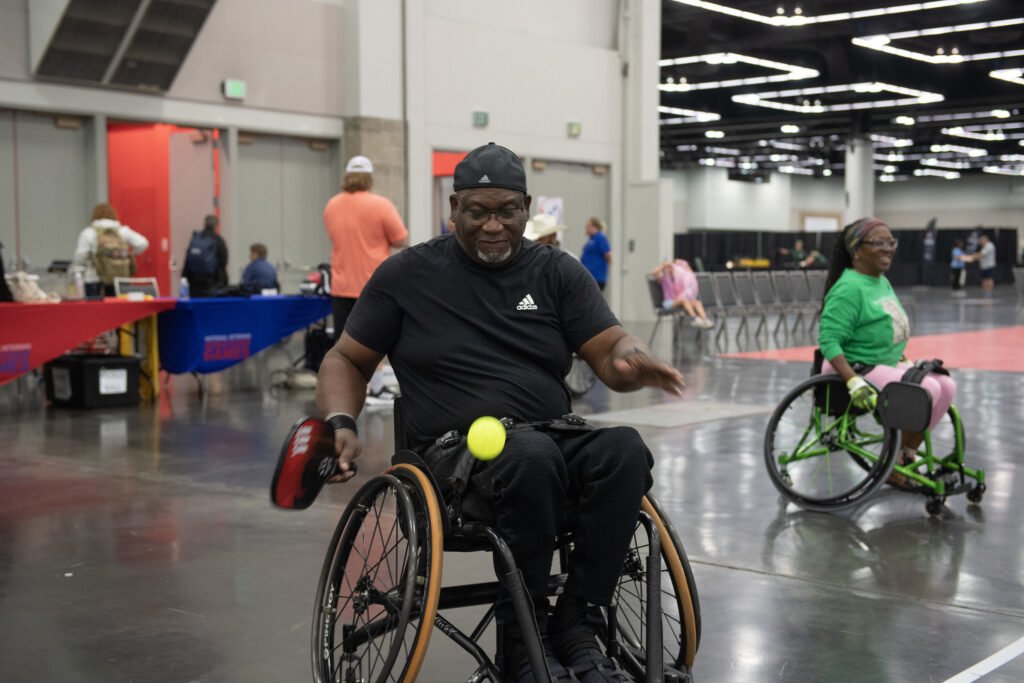
Inclusivity
One of the remarkable aspects of pickleball is its inclusive nature, fostering an environment where individuals of diverse skill levels can engage in enjoyable gameplay. This inclusivity is a defining feature, making it a sport accessible to everyone, from beginners to seasoned athletes.
For newcomers, pickleball offers a welcoming entry point into racket sports. Its relatively simple rules and smaller court size make it less intimidating than some other sports. Beginners can quickly grasp the fundamentals, enabling them to participate and enjoy the game from the start. The forgiving nature of pickleball—allowing a slower pace and providing ample opportunities for practice—encourages novices to develop their skills and confidence gradually.
What makes pickleball particularly special is its ability to accommodate players of varying proficiency levels in the same game. Experienced players often enjoy sharing their knowledge and tips with beginners, creating an environment conducive to learning. More skilled players can adjust their gameplay to match the level of their opponents, ensuring a balanced and engaging experience for everyone involved. This adaptability allows for matches where both beginners and advanced players can compete competitively yet still have an enjoyable time.
The sport’s mixed-age appeal further contributes to its inclusivity. Families can play together, bridging generational gaps and strengthening bonds through shared experiences on the court. It’s not uncommon to witness grandparents, parents, and children reveling in a spirited match, each contributing their unique skills while relishing the camaraderie and joy that pickleball fosters.
Ultimately, pickleball’s inclusivity lies at the heart of its widespread appeal. It is more than just a game; it is a welcoming community where people of all backgrounds and abilities can come together to have fun, stay active, and forge lasting connections.
Pickleball’s meteoric rise in popularity can be attributed to a multifaceted blend of factors that appeal to a broad spectrum of players. Its accessibility serves as a cornerstone for drawing in participants across diverse demographics. The game’s rules are relatively simple, the court size smaller than that of tennis, and the equipment requirements minimal, making it easily approachable for beginners. This welcoming entry point encourages people of all ages and skill levels to give it a try, fostering inclusivity within the sport.
Beyond its accessibility, the inherently social nature of pickleball plays a pivotal role in its widespread appeal. The game can be played in singles or doubles, encouraging interaction, teamwork, and a sense of camaraderie among players. This social aspect extends beyond the court, creating a community of enthusiasts who bond over their shared love for the sport.
Pickleball’s allure also lies in its ability to provide a fulfilling physical activity without being overly strenuous. The game offers a good workout, promoting cardiovascular health, agility, and reflexes while being gentler on the body compared to high-impact sports. Its lower intensity but engaging nature makes it attractive to individuals seeking a balanced yet enjoyable form of exercise.
Furthermore, the sheer fun and addictiveness of pickleball contribute significantly to its popularity. The fusion of elements from various racket sports creates a unique and dynamic gameplay experience that keeps players coming back for more.
The convergence of accessibility, social engagement, physical benefits, and sheer enjoyment constitutes the pillars upon which pickleball has built its broad and fervent following, solidifying its status as a beloved and burgeoning sport worldwide.

